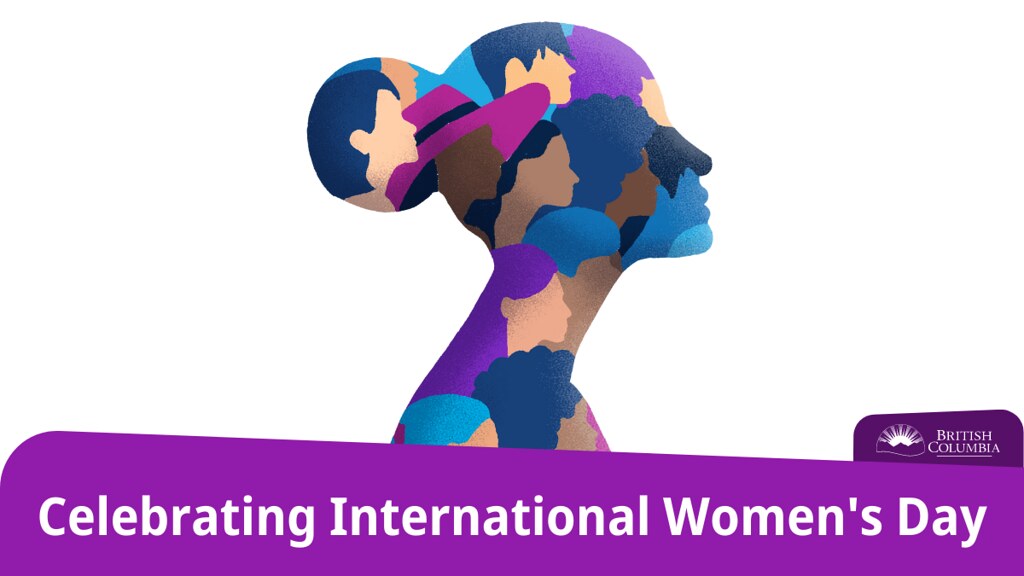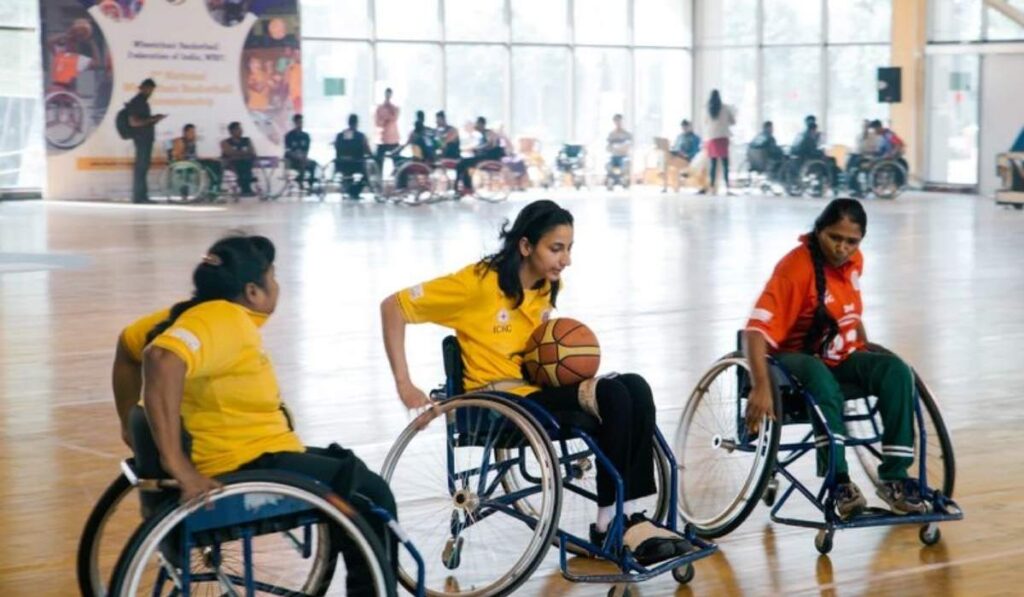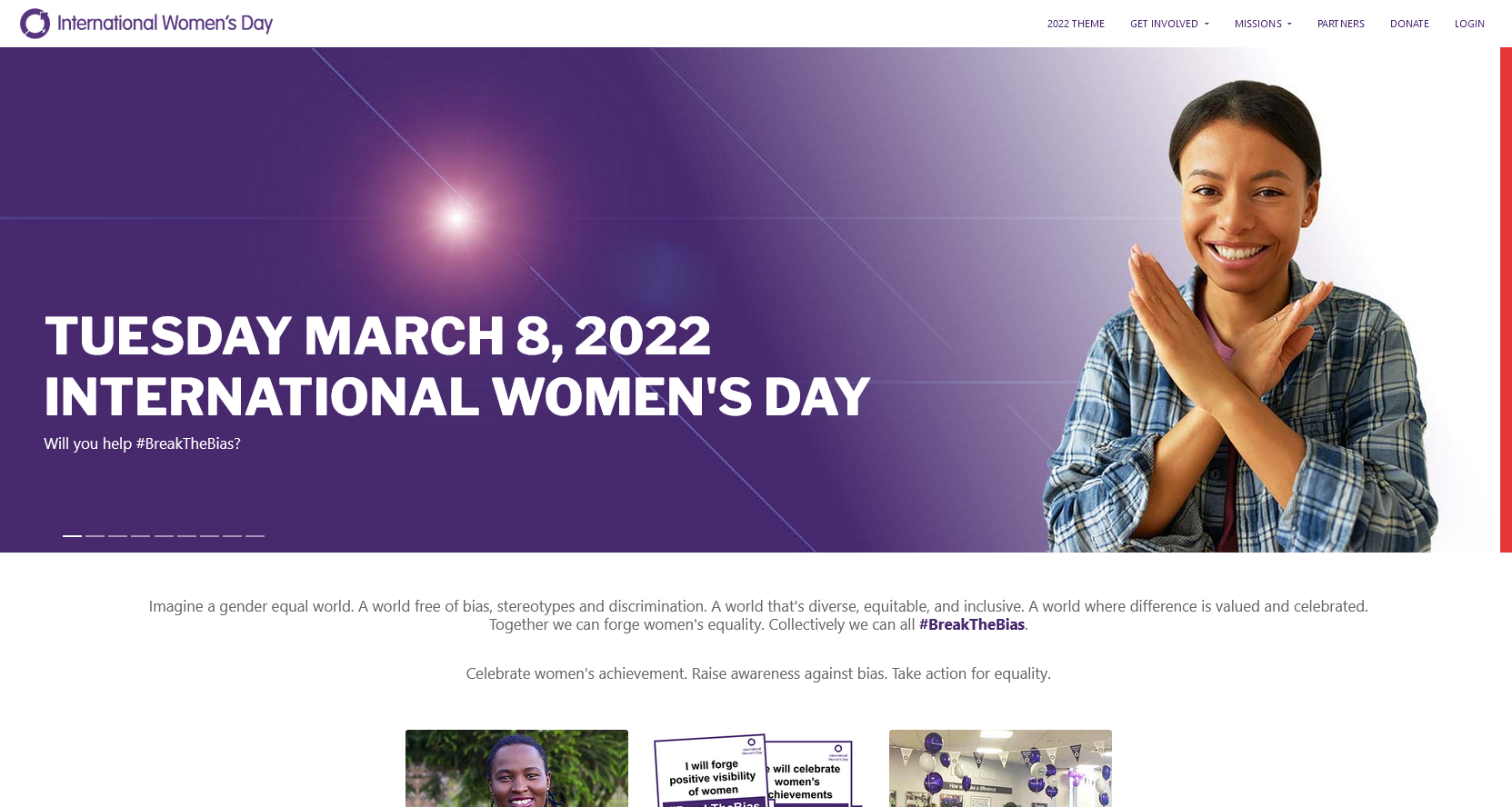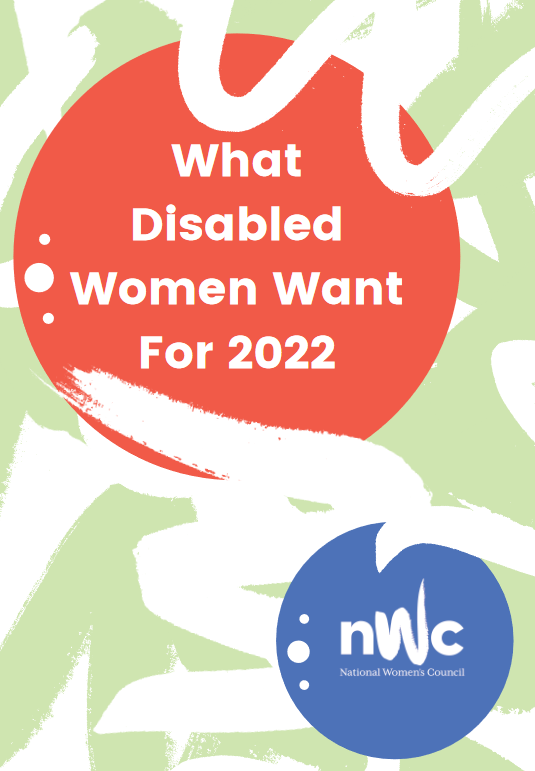
Selfadvocatenet.com is in support of International Woman’s Day
Selfadvocatenet intention is to highlight why it is important to an included woman and their contribution to our society
This year’s theme is Break The Bias.
What is International Woman’s Day
International Women’s Day on March 8th each year celebrates the social, economic, and political achievements of women around the world.
WOMEN’S DAY 2022 – Break the Bias | International Womens Day | 8th March | Happy Women’s Day Wishes
Transcript Video Message by António Guterres, Secretary-General of the United Nations, on International Women’s Day 2022.
“On International Women’s Day, we celebrate women and girls everywhere.
We celebrate their contributions to ending the COVID-19 pandemic. Their ideas, innovations and activism are changing our world for the better. And their leadership across all walks of life.
But we also recognize that in too many areas, the clock on women’s rights is moving backwards. The pandemic has kept girls and women out of schools and workplaces. They face rising poverty and rising violence. They do the vast majority of the world’s unpaid but essential care work. They’re targets of violence and abuse, just because of their gender.
In all countries, women are scandalously under-represented in the halls of power and the boardrooms of business. And as this year’s theme reminds us, they bear the brunt of climate change and environmental degradation. Starting now, on International Women’s Day, it’s time to turn the clock forward for every woman and girl.
By guaranteeing quality education for every girl, they can build the lives they want and help make the world a better place for us all. Through massive investments in women’s training and decent work.
Through effective action to end gender-based violence. Through bold action to protect our planet. Through universal care that is fully integrated into social protection systems. And through targeted measures like gender quotas so we can all benefit from women’s ideas, experience and leadership everywhere decisions are made.
Gender inequality is essentially a question of power, in a male-dominated world and a male-dominated culture. Power relations must be reversed. At the United Nations, we’ve achieved gender parity in senior management at headquarters and around the world — improving our work and better representing the communities we serve.
We need more women environment ministers, business leaders and presidents and prime ministers. They can push countries to address the climate crisis, develop green jobs and build a more just and sustainable world. We cannot emerge from the pandemic with the clock spinning backwards on gender equality. We need to turn the clock forward on women’s rights. The time is now”. International Women’s Day Website: https://www.un.org/en/observances/wom…
Victoria Tuesday, March 8, 2022, 7:30 AM



The Prime Minister, Justin Trudeau, today issued the following statement on International Women’s Day:
“Women, girls, and gender diverse people play an invaluable role in building a fairer and more inclusive future with equal opportunity for everyone, here in Canada and around the world.
“Today, on International Women’s Day, we celebrate the achievements of women and girls that have helped shape the world we know today and we recommit to ensuring that everyone has the chance to reach their full potential, regardless of their gender identity, race, ethnicity or religion. This year’s theme, Women Inspiring Women, invites us to highlight the accomplishments of the many women, girls, and gender diverse people who demonstrate leadership by challenging norms and harmful stereotypes, empowering others, and serving as role models for all of us.
“Canadian women and girls are leaders in breaking down barriers – from 2022 Winter Olympic and Paralympic athletes like Lisa DeJong, who won Canada’s first-ever Paralympic snowboard cross medal, to award-winning director and animator Domee Shi, whose debut feature film will be released this week. In the arts, business, medicine, sports, and Canada’s public service, women are continuously overcoming significant obstacles and paving the way for the next generation.
“Since the beginning of the pandemic, women and girls have been disproportionately bearing the impacts of COVID-19. This is especially true for many marginalized groups, including Indigenous, Black and racialized women as well as women living with disabilities, and those who are members of LGBTQ2 communities. The Government of Canada has been there to support them, including through the Feminist Response and Recovery Fund and the Task Force on Women in the Economy. As we recover from the pandemic, we have a unique opportunity to build a more inclusive future, including through a Canada-wide $10-a-day early learning and child care system, which will make life more affordable for Canadian families and increase women’s participation in the workforce. We will also continue to support initiatives that promote gender equality and the empowerment of women and girls worldwide through the Feminist International Assistance Policy.
“Today, as we celebrate the many accomplishments of women and girls who are building a fairer, stronger, and more inclusive future, we cannot forget that there is more to be done. We all have a role to play in breaking down barriers and ensuring that all women, girls, and gender diverse people have every opportunity to succeed in life.”
This on Justin Trudeau’s website go to the link here

International Women’s Day: A celebration of the strength, determination and resiliency of everyday women
Today is International Women’s Day (IWD). Since the first IWD in 1911, this date has been devoted to celebrating the social, economic, cultural and political achievements of women. It has also been a reminder of the work still to be done in achieving gender equality.
Identifying as a woman in today’s political and social reality is not easy. Women continue to be denied education, overlooked and under-compensated for employment, sexually exploited, abused, and deprived of their sexual health and reproductive rights. These are not inherent features of being female, but a result of the way society views women.
Likewise, living with a disability is difficult. Not because of disability itself, but because of the way our society is structured. Navigating a world that was not built with you in mind is guaranteed to be challenging. Discrimination, exclusion and segregation, disproportionately high rates of poverty and victimization are the product of the widespread devaluation of people with disabilities.
So what does this mean for someone who is both a woman and a person with a disability? What if you’re also gay, transgender, indigenous or part of a racialized group? Being part of multiple marginalized groups, sometimes referred to as double discrimination, often means even more barriers. Individuals with disabilities who are faced with these barriers and “succeed” despite them are often portrayed as heroes, superhuman people to be admired. The exception to the rule.
As we celebrate International Women’s Day, we want to offer a different perspective. An estimated one in five Canadians (or 6.2 million people) aged 15 years and over have a disability, and at least 53% of these people are women. We want to celebrate women with disabilities as regular women. Women are often faced with barriers that are unfair. Women with strength, determination and passion.
As a national family-based organization, we work alongside these women and their allies every day. Consider these scenarios:
- A teenage girl with an intellectual disability is participating in her high school’s mainstream health and sex education curriculum. Some people think she would be better off in a “special” class or that information about healthcare and sexuality is irrelevant for people with a disability.
Health care providers often do not support women with disabilities to seek preventative care, focusing instead on the medicalization of disability and not on the health conditions they face as women. Women with disabilities are less likely than women without disabilities to receive pelvic and mammogram exams on a regular basis and are therefore at a higher risk for delayed diagnosis of breast and cervical cancer.
- A mother with an intellectual disability is working with a lawyer to maintain custody of her child. Her ability to parent is being questioned because of her disability.
Up until as late as the mid-1970s, thousands of women with intellectual and other disabilities were sterilized involuntarily in Canada under the British Columbia and Alberta Sexual Sterilization Acts.
People with an intellectual disability make up somewhere between 1-3% of the overall Canadian population, however parents with an intellectual disability are disproportionately represented within the child protection system. More than 1 in 10 child maltreatment investigations opened in Canada in 2003 involved children of parents with cognitive impairments.
Article 23 of the UN Convention on the Rights of Persons with Disabilities guarantees people with disabilities the right to family life, requires access to appropriate supports to raise children and prohibits that a child is separated from their parent based on disability.
- A young woman with an intellectual disability reports her experience with sexual assault to police, despite the risk that she may not be believed.
Women with disabilities are four times as likely to be victims of violence than non-disabled women, while women with multiple disabilities experience even higher rates of violence. Across Canada, few sexual assault crisis centres or transition houses are accessible to women with disabilities.
- A woman with an intellectual disability expresses her desire to have choice and control over where she lives. Some professionals believe she isn’t capable of decision-making because of her disability.
A disproportionate number of women with disabilities live in congregate care living arrangements such as group homes or institutions, where they experience high-stress factors and are at a higher risk of infections.
- The mother of a child with an intellectual disability is advocating for additional government-funded support for her daughter so she can remain in the workforce.
Mothers of children with intellectual disabilities are over-represented in unemployment and underemployment statistics due to being unable to work or needing to limit employment to stay home to support the needs of their child.
These are only a few examples of the ways that women with disabilities and their allies stand up to the inequality that exists in our communities. They are everyday women. While we’re grateful for their commitment and resolve, it shouldn’t be their responsibility to overcome these barriers. These barriers are preventable.
When we reflect on the scenarios above, it’s striking how each is inextricably linked to the way we value people. Whether or not someone belongs, whether their voice is heard, their opinion valued, or their choice respected, all ties back to whether we value that individual on an equal basis with others.
We live in a society that places value on the social roles we hold, the image we portray and the economic contributions we make. We have some wonderful Canadian examples of women with disabilities succeeding in government, politics, business, sports, communications and arts. We want to celebrate them, while also highlighting that they are not worthy of respect because of their achievements or their ability to “fit into society” despite their difference. Women with disabilities have inherent value as people, just for being themselves. That one key belief holds the power to dramatically shift the way we treat others, the types of policies we create and the kind of society we build.
This on Inclusion Canada website go to the link here
Government of Canada helping remove barriers to training and employment for women

News release
March 7, 2022, Gatineau, Quebec Employment and Social Development Canada
The COVID-19 pandemic has had a significant impact on Canadian workers, but women have been disproportionately affected, and their economic recovery has been slower. The Government of Canada recognizes the importance of investing in new training and employment supports for women, including eliminating barriers to their inclusion in the workforce so that the country can achieve a strong and inclusive economic recovery.
Today, on the eve of International Women’s Day, the Minister of Employment, Workforce Development and Disability Inclusion, Carla Qualtrough, announced 26 projects approved for funding under the Women’s Employment Readiness pilot program. These projects will test and provide foundational and transferable skills training models, such as literacy and essential skills as well as wrap-around supports to access skills training, including child care, transportation and counselling.
The pilot program funds organizations to provide and test pre-employment and skills development supports for women who face barriers to training and employment, as well as new ways to help employers increase inclusivity in the workplace. The pilot targets racialized women and/or Indigenous women, women with disabilities, women from the LGBTQ2 community and women who have been out of work for an extended period.
The pandemic exacerbated pre-existing labour market inequalities for many Canadians, including women. Women experienced disproportionate job losses, partly because many works in hard-hit sectors, such as retail, restaurants and hospitality, and partly because of increased caring responsibilities, among other factors. Employment and training supports need to address the unique needs of diverse women so that they can fully benefit from economic recovery.
The pilot program will support women facing barriers across all 13 provinces and territories. The results of the pilot will inform systemic changes to skills and employment programming, to help women across the country gain better access to skills and training opportunities.
Quotes
“On the eve of International Women’s Day, we can take stock of the progress that women in Canada have made, and recognize the work still ahead. I’m proud to see our government invest in organizations that are leading that vital work by helping marginalized women overcome barriers to employment. This is about empowering more women to create better lives for themselves, while also building the strong, skilled and inclusive workforce Canada needs.”
– Minister of Employment, Workforce Development and Disability Inclusion, Carla Qualtrough
“The COVID-19 pandemic has disproportionately impacted racialized women, Indigenous women, women with disabilities and the LGBTQ2 community. Today’s announcement, on the eve of International Women’s Day, is part of our government’s commitment to ensure that women are at the forefront of Canada’s economic recovery. We will continue to support women and girls and to ensure that their lived experiences are considered and valued.”
– Minister for Women and Gender Equality and Youth, Marci Ien
Quick facts
- Funding of up to $50 million, for these 26 projects, was included as part of the 2020 Fall Economic Statement.
- Women have made great strides in the past decades toward equality in the labour market. However, they still face many barriers and are not yet experiencing outcomes equal to men’s. Although women’s employment rates increased over the past decades, from 47% in 1976 to 67% in 2020, it has been relatively stable since 2008, maintaining a difference of approximately six percentage points compared to men (73%). Some key barriers to gender equality in the labour market persist, notably the unbalanced sharing of family responsibilities, barriers faced by mothers in the workplace, social norms related to gender roles and discrimination in the workplace. The COVID‑19 pandemic has exacerbated many of these challenges.
- On average, women earn and participate in the labour market less than men and have lower employment rates. For example, women generally earn $0.87 for every dollar earned by men (Statistics Canada, 2018). The earnings gap is worse for women facing multiple barriers, such as racialized women, Indigenous women, women with disabilities and women from the LGBTQ2 community, among others.
- The Government of Canada makes significant investments in programs such as the bilateral labour market development agreements and workforce development agreements with provinces and territories. In addition, federal programs such as the Sectoral Workforce Solutions Program, the Skills for Success program, the Union Training and Innovation Program, the Skilled Trades Awareness and Readiness program, the Apprenticeship Grants and the Apprenticeship Service are helping women get the training and develop the skills they need in the workforce.
Related products
Associated links
- About the Women’s Employment Readiness pilot program
- International Women’s Day
- Fall Economic Statement 2020
- Government of Canada Supports for Apprentices
This is on Govt of Canada Website go to the link here
Women With Disability: Overcoming Dual Discrimination From Society

Women’s Day is around the corner and women with disabilities are an important narrative to be explored as they face double discrimination, taking their gender into account. The intersectionality makes these women more vulnerable to hatred and ostracisation, as two cases from the recent past, involving public places like a restaurant and a movie theatre have proved.
The 2011 Census says that over 21 million persons in India live with a disability, out of these, 9.3 million are women. From reproductive rights to their right to attaining education and employment, every step is a struggle for these women. But if you think it is their disability that acts as a hindrance in their participation and representation, you are wrong. The biggest barrier they face comes from our society which barely makes an effort to create disabled-friendly spaces.
From schools to workplaces and recreational spaces like restaurants, disability is seen as an inconvenience by society, and specially-abled people are made to feel unwanted- a burden no one cares to carry. This unjust attitude creates a hostile environment which only makes life more difficult for those dealing with a disability.
Women with disabilities, especially from rural areas, are often left out of family interactions, important decisions, and community activities. In addition, they are exposed to social stigma and stereotyping within society. The unfair and unjust treatment often leads them to feel devalued, isolated, and ashamed.
As the World Health Organisation notes, “Disability is thus not just a health problem. It is a complex phenomenon, reflecting the interaction between features of a person’s body and features of the society in which he or she lives.”
Recently, Kavya Mukhija, a wheelchair-bound woman, went to a PVR Cinema with her family which claimed to be wheelchair accessible. However, on reaching the theatre, she was made to sit near the doors of the cinema hall and not next to her family. When Mukhija took to social media to narrate her ordeal, she received a lot of empathy. But did is a spark in societal or infrastructural change, which would ensure that no other woman would have to face the same? Barely, and Mukhija wasn’t the only woman with a disability who was treated callously this year.
Srishti Pandey recalled in a viral thread earlier this year how the staff at a pub in Gurugram allegedly told her that the other customers will “get disturbed” if she was given access to indoor seating. The pub’s management claimed in a statement that they had asked Pandey to opt for outdoor seating for the sake of her own “safety”. That a public space would rather make a disabled woman sit outside than create a disabled-friendly infrastructure sums up our attitude towards specially-abled individuals. It is always the disabled individuals who must compromise because we are too busy making excuses.
The pandemic made the conditions worse for these women, especially in India. In 2020, Renu Adlakha, disability and gender researcher with Centre for Women’s Development Studies in Delhi, narrated her pandemic experience in a panel and said “I have access to mobility, an independent source of income, live in a big city, in a community of middle-class households. And yet, I felt so deprived during the pandemic.” The pandemic has been particularly cruel to these women and made them more vulnerable.
Of course, there have been numerous stories of women who have taken these social challenges head-on, living their life to the fullest. Take Payal Kapoor, for instance, who lost her vision at the age of 22 due to an irreversible medical condition. Recounting her experience with disability, she told SheThePeople, “Of course, it hasn’t always been easy. People turned their backs on me. I remember I was at a conference once & coffee break happened. Before I could turn to anyone for help, the room was empty. It was a humiliating experience. I was also rejected from jobs for how I looked.”
Kapoor didn’t let society’s attitude towards her disability stop her. “I reached a point when I got fed up of sitting around-‘That’s it! I have to go out there & live again.’ A friend connected me to an NGO that taught me essential skills I would need every day. I also learnt braille & what a feeling it was to read again!”
Despite such inspirational stories, the fact remains that India needs to take concrete steps on both policy and societal levels to raise awareness about the cause make public spaces accessible. In the past, we have seen numerous cases where disabled women have been subjected to gruesome sexual crimes, proving that we have failed to guarantee even safety to individuals of are so vulnerable to mistreatment.
This Women’s Day, let us not celebrate womanhood but focus on finding solutions that can provide immediate relief to women with disability.
Read more at: https://www.shethepeople.tv/top-stories/inspiration/women-with-disabilities-womens-day-2022/
What Disabled Women Want For 2022
Dawn Canada News




